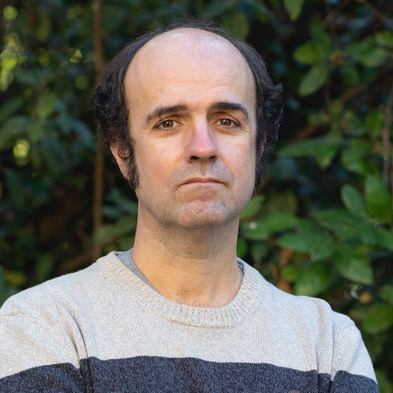The Genomic Instability Group focuses its research on understanding the molecular mechanisms leading to cancer and other age-related diseases, with the ultimate goal of translating this knowledge into novel therapeutic strategies. Our initial investigations centred on Replicative Stress (RS), a type of DNA damage sensed by the ATR kinase, and that is particularly abundant in some cancer cells. Our work in this area led to the discovery of selective ATR inhibitors that were further improved to enable their clinical development as anticancer agents. Next, we became increasingly interested in understanding the mechanisms of drug resistance to specific agents, such as inhibitors of ATR or USP7. More recently, our group has revealed that one of the most frequent mutations in human cancer, inactivation of the tumour suppressor FBXW7, leads to multidrug resistance (MDR). Importantly, we have also discovered strategies to overcome MDR, which is an important area of our current research.
Research Scientists
- Vanesa Lafarga
- Matilde Murga
Post-Doctoral Fellows
- Ivó Hernández
Graduate Students
- Gema López
- Jorge Mota
- Belén Navarro
- Anabel Sáez
Technicians
- Marta Elena Antón
- Alicia González
- Mario López
- Sara Rodrigo
Publications
- (2024). Nucleolar stress caused by arginine-rich peptides triggers a ribosomopathy and accelerates aging in mice. Mol Cell (in press). CNIO Publication.
- (2023). Actionable cancer vulnerability due to translational arrest, p53 aggregation and ribosome biogenesis stress evoked by the disulfiram metabolite CuET. Cell Death Differ 30, 1666-1678. CNIO Publication.
 Open Access
Open Access - (2023). Decoding protein methylation function with thermal stability analysis.. Nat Commun 14, 3016. CNIO Publication.
- (2023). A Multiparametric and High-Throughput Platform for Host-Virus Binding Screens. Nano Lett 23, 3701-3707. CNIO Publication.
- (2023). PD-L1ATTAC mice reveal the potential of depleting PD-L1 expressing cells in cancer therapy. Aging (Albany NY) 15, 1791-1807. CNIO Publication.
- (2023). A chemical screen underscores the essential role of STAT1-dependent IFN? signaling to regulate HLA-I expression in cancer cells. MicroPubl Biol (in press). CNIO Publication.
- (2022). Distinct roles for PARP-1 and PARP-2 in c-Myc-driven B-cell lymphoma in mice.. Blood 139, 228-239. CNIO Publication.
 Open Access
Open Access - (2022). A bispecific monomeric nanobody induces spike trimer dimers and neutralizes SARS-CoV-2 in vivo. Nat Commun 13, 155. CNIO Publication.
 Open Access
Open Access - (2022). Targeting the nucleolus as a therapeutic strategy in human disease. Trends Biochem Sci (in press). CNIO Publication.
- (2022). Activation of the integrated stress response is a vulnerability for multidrug-resistant FBXW7-deficient cells. EMBO Mol Med 0, e15855. CNIO Publication.
 Open Access
Open Access - (2022). Prolonged estrogen deprivation triggers a broad immunosuppressive phenotype in breast cancer cells. Mol Oncol 16, 148-165. CNIO Publication.
 Open Access
Open Access - (2022). Emerging concepts in drug discovery for cancer therapy. Mol Oncol 16, 3757-3760. CNIO Publication.
- (2022). Alkylating Agent-Induced Toxicity and Melatonin-Based Therapies. Front Pharmacol 13, 873197. CNIO Publication.
- (2022). An in silico analysis identifies drugs potentially modulating the cytokine storm triggered by SARS-CoV-2 infection.. Sci Rep 12, 1626. CNIO Publication.
 Open Access
Open Access - (2022). New regulators of the tetracycline-inducible gene expression system identified by chemical and genetic screens. FEBS Open Bio 12, 1896-1908. CNIO Publication.
- (2021). USP7 limits CDK1 activity throughout the cell cycle. EMBO J 40, e99692. CNIO Publication.
- (2021). Widespread displacement of DNA- and RNA-binding factors underlies toxicity of arginine-rich cell-penetrating peptides. EMBO J 40, e99692. CNIO Publication.
- (2021). USP7 and VCP FAF1 define the SUMO/Ubiquitin landscape at the DNA replication fork. Cell Reports 37, 109819. CNIO Publication.
- (2021). A chemical screen for modulators of mRNA translation identifies a distinct mechanism of toxicity for sphingosine kinase inhibitors. PLoS Biol 19, e3001263. CNIO Publication.
- (2021). Coordinating DNA Replication and Mitosis through Ubiquitin/SUMO and CDK1.. Int J Mol Sci 22, 8796. CNIO Publication.
- (2020). ATR expands embryonic stem cell fate potential in response to replication stress. Elife 12, e54756. CNIO Publication.
 Open Access
Open Access - (2020). GRK2-Dependent HuR Phosphorylation Regulates HIF1a Activation Under Hypoxia or Adrenergic Stress. Cancers 12, E1216. CNIO Publication.
 Open Access
Open Access - (2020). Supraphysiological protection from replication stress does not extend mammalian lifespan.. Aging (Albany NY) 12, 5612-5624. CNIO Publication.
- (2020). Mislocalization of SMN from the I-band and M-band in human skeletal myofibers in spinal muscular atrophy associates with primary structural alterations of the sarcomere.. Cell Tissue Res 381, 461-478. CNIO Publication.
- (2020). PDS5 proteins are required for proper cohesin dynamics and participate in replication fork protection. J Biol Chem 295, 146-157. CNIO Publication.
 Open Access
Open Access - (2019). TIAR controls mitotic entry, maintains genome stability and retains CDK1 in checkpoint bodies.. EMBO Rep 20, pii: e46224. CNIO Publication.
- (2019). BRCA1 Haploinsufficiency Is Masked by RNF168-Mediated Chromatin Ubiquitylation. Mol Cell 73, 1267-1281. CNIO Publication.
 Open Access
Open Access - (2019). A Chemical Screen Identifies Compounds Capable of Selecting for Haploidy in Mammalian Cells.. Cell Reports 28, 597-604. CNIO Publication.
 Open Access
Open Access - (2019). A Chemical Screen Identifies Compounds Limiting the Toxicity of C9ORF72 Dipeptide Repeats. Cell Chem Biol 26, 235-243. CNIO Publication.
- (2019). TIAR marks nuclear G2/M transition granules and restricts CDK1 activity under replication stress. EMBO Rep 20, e46224. CNIO Publication.
- (2019). Nucleolin reorganization and nucleolar stress in purkinje cells of mutant PCD mice. Neurobiol Dis 127, 312-322. CNIO Publication.


